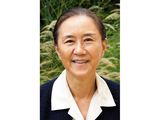GESTAR II Seminar Series, April 30th at 1:00pm
Join us for a virtual seminar by Dr. Rong Fu, Department of Atmospheric and Oceanic Sciences, University of California, Los Angeles. Her talk is titled "Understanding drought, heat waves and fire weather from weather to climate scales."
Date and Time: Tuesday, April 30, 2024 at 1:00pm EST
Join us via Teams.
Abstract:
"The National Earth System Prediction Capability (ESPC) aims to improve earth system prediction from sub-seasonal to decade scales, with emphasis on “seamless” prediction. Yet, our understanding of weather-climate connection, especially in a changing climate, is still in its infancy. For example, it is not clear what weather patterns are responsible for dry spells and heat waves during the warm season over continental United States (US), and which of these patterns are responsible for extreme droughts and stronger and longer fire season? How do decadal climate variability and anthropogenic forced climate change affect the intensity and frequency of extreme fire weather?
In this seminar, I will report our studies that explore these questions through machine learning approaches. To assess the influence of weather patterns on droughts and fire weather, we use multivariate Self-Organization Map to characterize the weather patterns responsible for dry and wet spells, their associated atmospheric thermodynamic condition and moisture transport, and their contributions to warm season droughts and decadal variability of the land surface aridity and fire weather. We also use a constructed flow analogue approach to determine the relative influence of natural climate variability and anthropogenic forced change on the increase of fire weather and drought intensity and areas in recent decades over Western US, including those that contributed to the 2020 August Camp Fire, and 2020-2022 Western US drought.
The analyses suggest that, although many weather patterns can contribute to dry spells and moderate droughts, extreme droughts are largely caused by an increased frequency and persistence of a few leading weather patterns that are responsible for strong dry spells climatologically. Thus, understand the causes behind the changes of these few weather patterns is central for determining predictability of the extreme droughts. On the other hand, for the same weather patterns, the probability distributions of surface temperature and vapor pressure deficit (VPD) in the recent decades have changed significantly over the western US, leading to higher probability of fire weather and increased drought severity and areas, compared to earlier decades. Consequently, at least two-thirds of the increase of the fire weather over western US during recent decades is attributable to climate change, whereas only one third or less of the increase of fire weather is attributable to changing weather patterns. The increase of evaporative demand due to warming of surface temperature has become the main driver of increasing drought severity and area since 2000. Thus, climate changes can have significant impact on weather and sub-seasonal dry spells and interannual droughts."
Biography:
Dr. Rong Fu is a professor in the Department of Atmospheric and Oceanic Sciences, the director of the Joint Institute of Regional Earth System Science and Engineering in University of California, Los Angeles. Her research focuses on the mechanisms that control droughts, rainfall seasonality and variability over Amazonian and North American regions, and how changes of global climate, local vegetation and biomass burning have influenced these processes in the recent past and will influence rainfall seasonality and droughts in the future. She received NSF CAREER and NASA New Investigator Awards, and the American Meteorological Society (AMS) Outstanding Achievement Award for biometeorology. She is an elected member of National Academy of Engineering, and also an elected fellow of the AMS, the American Geophysical Union (AGU), and the American Association For the Advancement of Science (AAAS), respectively. She served as the President of the Global Environmental Change Section (2015-2016) and Leadership Team of the AGU Council, and the Chair of the AAAS Atmosphere and Hydrosphere (2022), and a member of AAAS Council and its Executive Committee (2023). She is also a current AMS Council Member. She has served on many national and international panels and co-led NOAA Drought Task Force IV. She also serves as an Editor of Journal of Geophysical Research – Atmosphere.
For more information on the GESTAR II Seminar Series, click here.
Tags:
Posted: April 26, 2024, 1:57 PM
